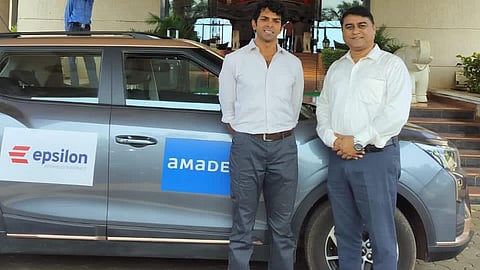
- Destinations
- Experiences
- Stay
- What's new
- Celebrating People
- Responsible Tourism
- CampaignsCampaigns
- Subscribe
- Buy Now

In this article, Sushil Reddy discusses regenerative braking in an electric car and how it helps in real-world driving conditions. He learnt about the concept during his 60-day, 7500+ km journey across India when he was on a mission to raise awareness about e-mobility under The SunPedal Ride project.
Sharing takeaways from his journey, Reddy writes:
Regenerative braking refers to the feature wherein, as you take your foot off the accelerator pedal, the electric motor acts like a generator, and hence, some part of the energy is gained back into the battery pack. This leads to a braking effect without even pressing the brake pedal. There are three main advantages:
1. Increased EV range in a city-driving environment or a downhill drive when you slow down often.
2. Brake pads do not get worn out often, leading to lesser maintenance costs.
3. The concept of a "one-pedal" drive experience since you are not using the brake pad to slow down.
We were driving from Hubli to Goa in the Mahindra XUV400 electric car. The car has an 'L' mode ("Lively" mode), which has a higher regenerative braking effect than the 'D' mode ("Drive" mode). Hubli to Goa is a downhill drive. The Google Maps distance was 195 kilometres. We started our drive in Hubli in the 'L' mode with a 60% SoC (battery level) and a dashboard range of 190 kilometres.
We reached our destination in Goa directly without any charging stop, with an SoC of 10% and a dashboard range of 30 kilometres. The elevation loss helped to gain those extra ~30 kilometres due to regenerative braking, which lessened our range anxiety.
Today, more than 50 companies in India are setting up EV charging stations. In our recent journey on the Mahindra XUV 400 electric car, we discovered that some fast charging stations were much better than others in terms of convenience, ease of use and availability of basic amenities like washrooms, restaurants/cafes, etc.
We got an opportunity to meet the team of the EV charging station company - Zeon Charging in Tirupur, Tamil Nadu. Karthikeyan Palanisamy, the Founder and CEO of Zeon, gave us some interesting insights that will be helpful for everyone. These are as follows:
1. Zeon primarily uses ABB chargers for better quality and reliability. This ensures minimum maintenance downtime of the chargers.
2. The charging time depends on the EV architecture in addition to the power output of the charging station; for example, some EVs can take a max input power of only 30 kW as compared to the Mahindra XUV400, which can take a max input power or around 50 kW during charging purely on the basis on the EV architecture. The charge curve differs for different EVs.
3. It is not recommended to charge beyond 80% SoC at a DC Fast Charger since the charging current significantly reduces post 80% SoC (CC/CV technique)
4. If there is an initial communication issue between the charger and the vehicle after connecting the gun, try to reboot one of the two or both and try again. (Switch-off and switch-on)
5. There are franchise opportunities for anyone to start their charging station with Zeon with an initial investment, which could range from INR 10 lakhs to INR 20 lakhs, tentatively, depending on the power output of the charger, etc.
To read takeaways Part 1, click here !
